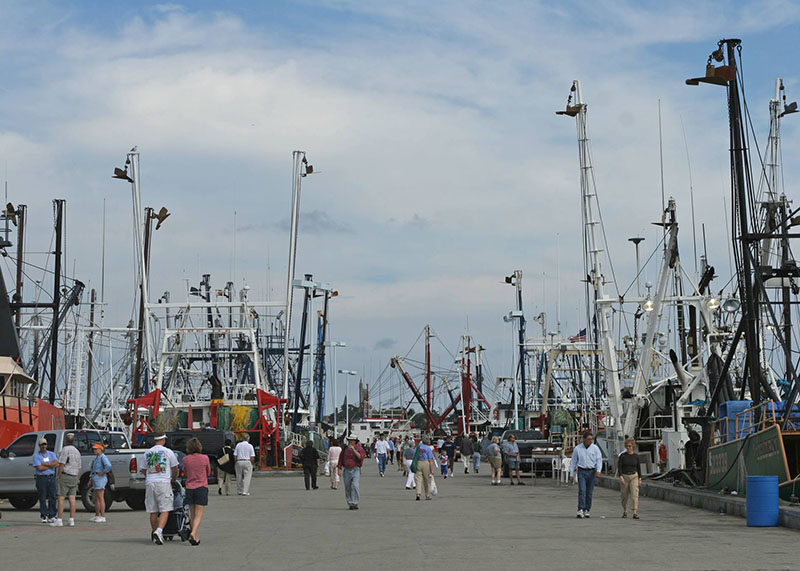Coastal communities need protection, along with fisheries
By 2050, global food production must increase by 70 percent to keep up with population growth. The pressure to grow, harvest and create more protein from America’s resources will be immense. Yet, America owns vast wealth in and near our coastal communities that permeates across state lines. This wealth must be protected for businesses, community survival and our nation’s food security.
Every summer, the wealth of our fisheries is seen coast to coast. Wild salmon return to pristine Alaskan waters, striped bass reappear near New England’s shores, and red snapper congregate in the Gulf of Mexico. As leaders of the Seafood Harvesters of America and lifelong fishermen, we shared stories like these — the story of the American fisherman — during the summer’s Capitol Hill Ocean Week.
Like any robust American resource, fisheries connect businesses, communities and families across the nation around hard work and resiliency. Renewable and sustainably managed, it has the capacity to help feed us in perpetuity.
But does it?
In 2017, U.S. commercial fishermen landed an astounding 9.9 billion pounds of seafood. Americans love the idea of eating American seafood. We celebrate it on menus and grocery store banners, devour dramatic fishing documentaries, and honor its heritage in our coastal towns. As a nation we’ve prioritized sustainability through laws like the Magnuson Stevens Act, which is why 91 percent of America’s fishery stocks are not overfished today — and that number is only improving.
Yet, America’s love affair with our sustainable fisheries must also be met with resource protection. In every corner of America, consumers’ wild seafood access and our nation’s food security face serious threats.
When the proposed Pebble Mine in Alaska’s Bristol Bay is fast-tracked through permitting, 50 percent of the world’s wild sockeye salmon and $1.5 billion in economic activity are at risk. When the nation’s largest wind farm on the Eastern Seaboard is set to be placed in rich traditional fishing grounds, fishermen cannot harvest the bounty the ocean offers. When NOAA’s budget is cut, scientific assessments cannot adequately account for dynamic fish migrations resulting from climate change. And when dangerous policies undercutting the Magnuson Stevens Act are proposed, responsibly managed stocks are allocated away from dinner plates in favor of recreation.
Fishermen are practical people; we don’t oppose economic development. But we’ve made significant sacrifices in recent decades and returned many fisheries to stable, profitable levels. It was the right thing to do, and we’re proud of it.
Our stewardship and resiliency depend on each link within the seafood supply chain understanding how protecting wild fishery resources protects America’s food security and the businesses and communities that benefit. More than just a price at the dock, that value is found in every link of that chain.
But it’s broader than that. A fishery is a community asset worth more than the income of its primary participants: the harvesters, processors, distributors, fuel suppliers, gear shops, machinists, and so many more.
It is opportunities and motivations created for our young people — offering them something to work toward. It’s complex ties between neighbors, municipalities, decision makers and business owners — people who thrive and weather downturns alongside each other. It’s a relationship with the local food bank and church. It’s dropping fresh fish off at the firehouse. This is how fishermen build resilient fishing communities across the nation, a value not captured in modern economic analysis.
But when fisheries face threats, or lack support, fishermen know there’s more at stake than the already substantial bottom line. It’s America’s strategic protein reserve.
That’s why we’ve supported forward thinking initiatives that bolster fisheries — starting with firm protections of the Magnuson Stevens Act. Seafood Harvesters has also teamed up with NOAA on its FishWatch program to educate Americans on U.S. seafood. Legislatures are pushing the American Fisheries Advisory Committee Act, aligning funds for industry research and expansion, and there is a serious push for a national seafood marketing entity similar to other resources like poultry, soy and dairy.
To capture the greatest value from these fisheries we must be steadfast in that stewardship, protect fishery access, and allocate resources to educate our consumers that buying American seafood means buying sustainable seafood. We must hold ourselves, our competitors and other resource industries accountable, protecting our ability to eat our own seafood.
We need to teach our decision makers and business leaders to value the resiliency of our communities and the role of fisheries in that resilience. Much like the value of a fish, that philosophy goes beyond the fishing village. Resiliency is just as needed in management, asking us to embed durability in management plans that make it possible for the next generation to become fishermen, and that create opportunity beyond the lucky few. After all, what makes a happier harbor or community, the one where only a few people are killing it, or the one where everyone is doing well? The question answers itself.
Diversity in fishery access and business development are vital pieces of our economy, and a robust import and export market is important. But resiliency starts at home, with how we manage and consume American resources for the good of the public. As we consider the possibilities of the future, let us not forget the value of what we have built.
Brett Veerhusen hosts Selecting Your First Vessel, a Young Fishermen's session at Pacific Marine Expo on Friday, Nov. 21 at 2:45 in the Fishermen's Lounge, located in the Alaska Hall at CenturyLink Field Event Center.







